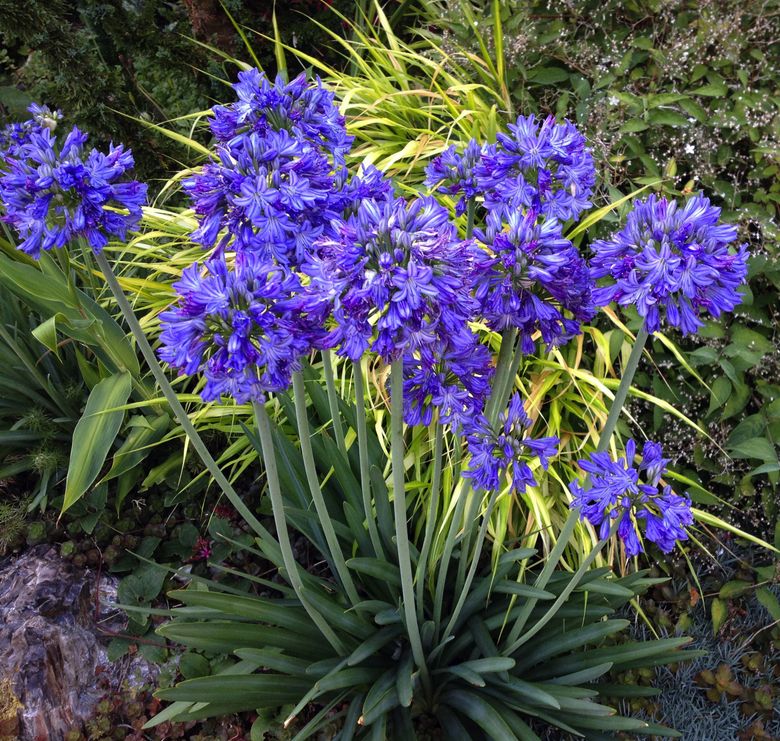Agapanthus Growing Conditions: Dirt, Sunshine, and Watering
Agapanthus Growing Conditions: Dirt, Sunshine, and Watering
Blog Article
Unleashing the Secret to Effective Agapanthus Farming: Advice for a Flourishing Yard
In the world of gardening, growing agapanthus effectively requires a strategic method that includes numerous facets of plant treatment. By understanding the nuances of agapanthus farming, one can develop an environment where these plants grow and flower abundantly.
Planting Agapanthus: Best Practices
When planting Agapanthus, appropriate dirt prep work is important for making sure effective development and growth of these attractive blossoms. Agapanthus, commonly referred to as Lily of the Nile or African lily, prospers in well-draining soil with a somewhat acidic to neutral pH level - Agapanthus. Before planting, it is vital to change hefty clay soils with raw material such as compost or peat moss to boost drain and offer necessary nutrients for the plants
To grow Agapanthus, select a place that obtains full sunlight to partial color, as this will certainly promote healthy and balanced development and bountiful flowering. Dig a hole twice the size of the plant's origin round and put the Agapanthus at the exact same deepness it was formerly expanding. Gently backfill the opening with dirt, pressing down strongly to get rid of any kind of air pockets around the roots.
Water the recently planted Agapanthus completely and continue to keep the dirt uniformly moist, especially throughout the plant's energetic growing period. Agapanthus. Using a balanced plant food once a month can further support the plant's development and flowering. By complying with these ideal methods for growing Agapanthus, you can produce a magnificent screen of these captivating blossoms in your yard
Perfect Dirt Conditions for Agapanthus
For optimal growth and blooming success of Agapanthus plants, ensuring the dirt conditions are perfect is important. Agapanthus chooses soil that is rich in nutrients, so integrating a balanced fertilizer during the expanding season can advertise healthy and balanced growth and dynamic blooms.

Watering and Fertilizing Tips
To guarantee healthy and balanced growth and vibrant flowers, appropriate watering and feeding methods are necessary for successful Agapanthus farming. Agapanthus plants gain from normal watering, especially during the expanding period. It is suggested to water deeply as soon as a week, making sure the soil is damp but not saturated. During hot weather or in pots, more frequent watering may be essential to avoid the dirt from drying out totally.
When it concerns feeding Agapanthus, a well balanced fertilizer with equivalent components nitrogen, phosphorus, and potassium can be used in the spring to advertise healthy and balanced development and flowering. Slow-release fertilizers are suitable for giving nutrients progressively over an extended period. Avoid over-fertilizing, as this can bring about excessive foliage development at the expenditure of blooms.
Additionally, including raw material like garden compost into the dirt can boost nutrient degrees and enhance soil framework, assisting in the general health of the Agapanthus plants. By adhering to these watering and content fertilizing tips, garden enthusiasts can ensure their Agapanthus plants flourish and produce sensational screens of flowers.
Pruning and Deadheading Strategies
Appropriate pruning and deadheading techniques play find more an essential duty in keeping the wellness and appearances of Agapanthus plants, matching the vital methods of watering and fertilizing for effective farming. Pruning Agapanthus includes getting rid of invested blossom heads, dead or yellowing fallen leaves, and overall shaping of the plant to advertise much better development. Deadheading, the process of eliminating faded blossoms, not only improves the plant's look yet likewise encourages additional blooming.
When deadheading Agapanthus, it is suggested to snip off the blossom stem at the base utilizing sharp, tidy shears. This procedure redirects the plant's power from seed production back right into root and foliage growth, promoting a much healthier and a lot more durable plant. Routine deadheading can extend the blooming period of Agapanthus and stop self-seeding, which can result in congestion.
In regards to trimming, Agapanthus generally gain from a light trim after flowering to clean up the plant and encourage fresh growth. Cutting back the spent flower stems and eliminating any type of damaged or dead vegetation aids maintain the plant's vitality and general look. Nonetheless, it is important to avoid cutting into the crown of the plant, as this can weaken its health and wellness.

Protecting Agapanthus From Pests and Diseases
Carrying out effective bug and condition monitoring methods is essential to safeguarding the wellness and vitality of Agapanthus plants in farming. Agapanthus are typically sturdy plants, however they can still drop target to numerous pests and illness otherwise properly taken care of. One common insect that affects Agapanthus is the Agapanthus borer, a caterpillar that tunnels into the plant, causing damage to the fallen leaves and flowers. To avoid invasions, regular inspection of the plants is necessary. If borers are discovered, they can be by hand eliminated, or insecticidal soap can be made use of as a control procedure.
In find enhancement to parasites, Agapanthus are prone to diseases such as origin rot and fungal leaf places. By remaining cautious and dealing with pest and disease concerns promptly, garden enthusiasts can assist their Agapanthus prosper and thrive.

Final Thought
In final thought, effective growing of agapanthus requires proper planting strategies, perfect dirt problems, adequate watering and fertilizing, routine trimming and deadheading, and security from bugs and illness. By adhering to these ideas and techniques, gardeners can make certain a growing garden loaded with lovely agapanthus blooms. Agapanthus. Bear in mind to preserve regular treatment and interest to information to promote the wellness and long life of these magnificent plants
When growing Agapanthus, correct dirt preparation is vital for guaranteeing successful growth and growth of these gorgeous blossoms.Water the newly planted Agapanthus completely and proceed to maintain the soil uniformly moist, especially during the plant's energetic expanding season.For optimum development and flowering success of Agapanthus plants, making certain the soil problems are perfect is important. When transplanting or growing Agapanthus, make certain the soil is well-prepared to give the essential structure for the plants to establish themselves efficiently. One common pest that influences Agapanthus is the Agapanthus borer, a caterpillar that tunnels right into the plant, causing damages to the fallen leaves and flowers.
Report this page